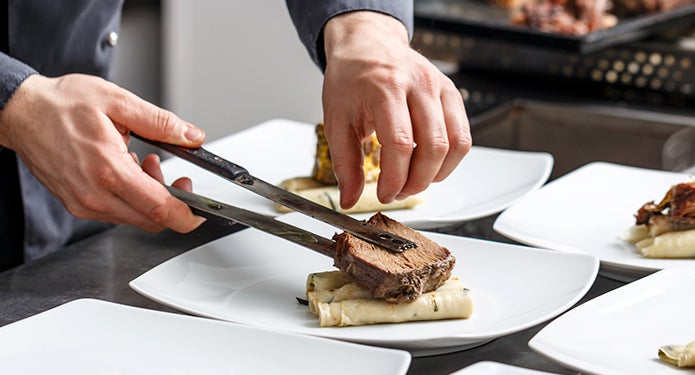Understand the difference between competing and succeeding, and learn how you can do the latter.
There’s a distinction between competing and succeeding in the restaurant business. But it can be difficult for an operator in the midst of the fray to recognize the difference.
Operators who are “competing” tend to work terribly hard on a day-to-day basis, fighting it out for every percentage of market share they can get and often scoring many little victories along the way.
What they don’t typically do, however, is look ahead for the next opportunity, whether it’s anticipating a dining trend, exploring an expansion possibility or building an exit strategy.
I know an operator is “succeeding” when they’re focused on the future as well as the present. And I’ve observed that these successful operators have at least three things in common:
- They are trendsetters.
- They make a healthy profit.
- They’re opening a second or third store.
Those are achievements most any operator would aspire to. So how does a “competing” operator move into the “succeeding” space?
It starts with understanding and applying this formula for success:
Achieving the highest level of popularity and profitability by creating a perception of value to your customer that transcends the price barrier.
The independent advantage
Creating a perception of value is largely a matter of exceeding customer expectations—something independent operators can do much better than chain restaurants.
Think of it this way: chain restaurants are all about meeting expectations. Their goal is to cook and serve the very same food in the very same fashion, all the way from Nova Scotia to Vancouver. This predictability is a very strong basis of their appeal to customers. But predictability isn’t particularly exciting to a more sophisticated dining public eager for new experiences.
Independent operators that can consistently surprise with fresh and qualitatively better experiences will increase the perceived value of their operations in customers’ minds—regardless of the prices they charge. I’m often asked by operators, “Why is the restaurant down the street busier than me when their prices are higher?” Because it’s not about your menu prices, I tell them. It’s about the value you deliver.
Focusing on the following variables can help position you to exceed expectations and deliver greater value.
Consistently solid basics
This applies to service, food and unit appearance. Build a “Culture of Hospitality” that puts the needs and experiences of your guests first. Put it in black and white, in mission and vision statements that clearly articulate your service promise. Post them, refer to them in training sessions and shift meetings and model them in your own behaviour.
Be meticulous about your food, from ingredient selection to preparation to plating. It’s not about matching the prices or portion sizes of your competitors, it’s about providing a higher level of taste and presentation to complement the superior service and ambiance.
Keep your interior and exterior spaces clean and neat. This is one area in which chains, on average, do a better job than independents. Replace that burned-out bulb, keep your outside trash bin hidden from view and make sure restroom cleanliness is regularly monitored.
Resonating points of differentiation
Covering the basics is a necessary but not sufficient tactic for success. You must also find ways to differentiate your operation from others that are doing the basics well. Here are some points that resonate particularly well with today’s customers.
Lifestyle integration. Do your menu and physical layout facilitate socialization? Are you open late at night to appeal to younger crowds? Find out as much as you can about your customers’ needs and wants—and structure your operation to fit into their lifestyles.
Sincere hospitality. You’ve already made service a priority—just make sure you hire people that can be genuine, not robotic, in their interactions with guests. Anyone can be trained to say and do the right things, but real hospitality means showing true warmth and consideration to others.
Menu desirability. When’s the last time you performed a menu analysis to see what is and isn’t selling? Are your dishes on trend for your concept? Does your menu look professional and read well?
Atmosphere. Create an environment that reflects current dining and design trends—don’t let your décor get stale. Consider using local and regional elements to set yourself further apart from chains that look the same from one province to another.
Concept essence. You must have a clear grasp of your concept so that you can incorporate elements of it into every aspect of your operation.
Owner/manager presence. Diners love to see the person in charge out and about. In many ways, you are the brand, so get yourself out in front of people whenever you can, in and out of the restaurant.
Apply this formula to your business and you’ll be on the road to succeeding rather than just competing.










